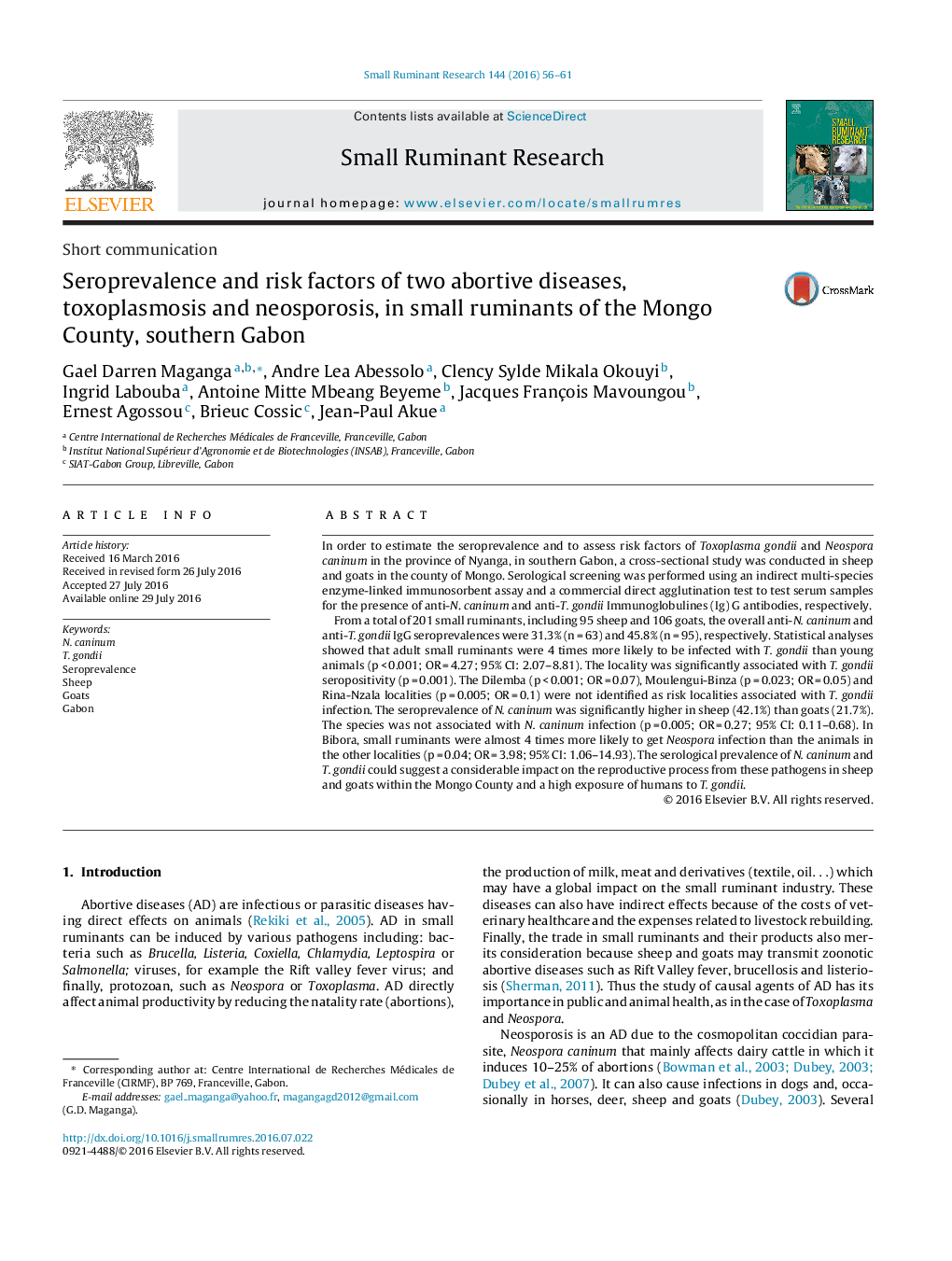| Article ID | Journal | Published Year | Pages | File Type |
|---|---|---|---|---|
| 5795357 | Small Ruminant Research | 2016 | 6 Pages |
•IgG antibodies against N. caninum have been detected in sheep and goats from Sub-Saharan Africa.•Adult small ruminants would be more receptive to toxoplasmosis than the young.•Small ruminants were almost 4 times more likely to get Neospora infection in some rural localities of southern Gabon.
In order to estimate the seroprevalence and to assess risk factors of Toxoplasma gondii and Neospora caninum in the province of Nyanga, in southern Gabon, a cross-sectional study was conducted in sheep and goats in the county of Mongo. Serological screening was performed using an indirect multi-species enzyme-linked immunosorbent assay and a commercial direct agglutination test to test serum samples for the presence of anti-N. caninum and anti-T. gondii Immunoglobulines (Ig) G antibodies, respectively.From a total of 201 small ruminants, including 95 sheep and 106 goats, the overall anti-N. caninum and anti-T. gondii IgG seroprevalences were 31.3% (n = 63) and 45.8% (n = 95), respectively. Statistical analyses showed that adult small ruminants were 4 times more likely to be infected with T. gondii than young animals (p < 0.001; OR = 4.27; 95% CI: 2.07–8.81). The locality was significantly associated with T. gondii seropositivity (p = 0.001). The Dilemba (p < 0.001; OR = 0.07), Moulengui-Binza (p = 0.023; OR = 0.05) and Rina-Nzala localities (p = 0.005; OR = 0.1) were not identified as risk localities associated with T. gondii infection. The seroprevalence of N. caninum was significantly higher in sheep (42.1%) than goats (21.7%). The species was not associated with N. caninum infection (p = 0.005; OR = 0.27; 95% CI: 0.11–0.68). In Bibora, small ruminants were almost 4 times more likely to get Neospora infection than the animals in the other localities (p = 0.04; OR = 3.98; 95% CI: 1.06–14.93). The serological prevalence of N. caninum and T. gondii could suggest a considerable impact on the reproductive process from these pathogens in sheep and goats within the Mongo County and a high exposure of humans to T. gondii.
